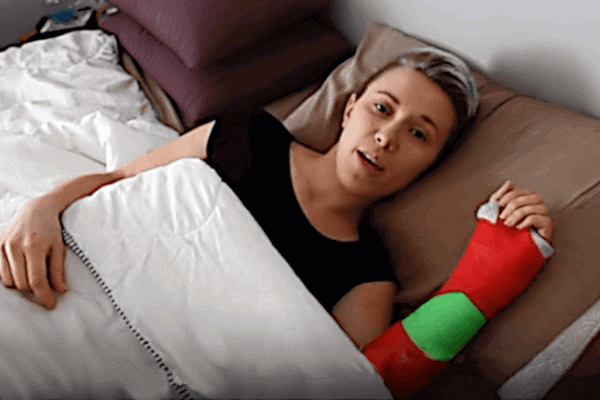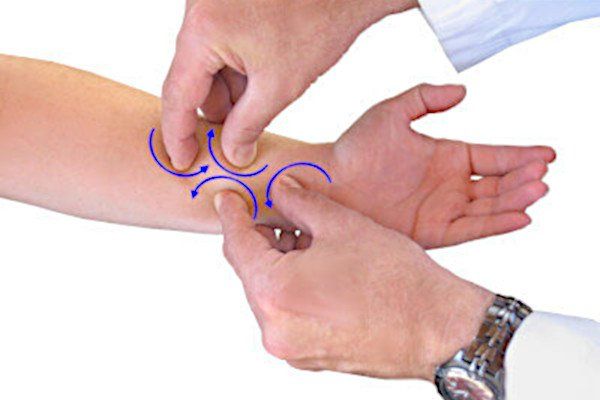Guide to Recovery from Carpal Tunnel Surgery
From Dr. Z - Carpal tunnel syndrome specialist
Guide to Recovery from Carpal Tunnel Surgery
The timeline and milestones of recovery from carpal tunnel surgery are as variable as the individual patient. Some patients heal quickly and go back to work in a couple weeks. Others might take up to a year. Still others may have complicating factors that can delay healing. These factors include obesity, diabetes or being a smoker.
Here is the general course of recovery that normal, healthy individuals can expect. But first, there are a few facts you should know about carpal tunnel surgery and recovery so that you're not surprised later on.
- FIND OUT: do you have carpal tunnel?
No strings attached self-test.
Facts about recovery from carpal tunnel surgery
If you’re having carpal tunnel surgery then you must really need it. And you have my sympathy. The pain, tingling or numbness are so bad they drove you to take this big step. Hopefully everything will go well for you.
You probably know that your exact recovery time cannot be predicted. It can be short and easy or long and painful - or anything in between. It depends on many variables which are too numerous to list here. But your doctor knows your particular medical history. Hopefully you've talked to your doctor about all of this, as well as the actual operation and recovery period.
Your doctor should discuss all of the key facts about carpal tunnel surgery well before the day of your operation. If you didn't get a chance to discuss them, do so now. Take time to review the instructions for recovery at home and what sort of aftercare is involved.
The need for carpal tunnel surgery
In general, most people have this surgery due to extremely bad pain, numbness, tingling or weakness in their fingers or hand. These are the key symptoms of this condition.
Carpal tunnel syndrome also goes by a few other names. These are:
- carpals
- carpal tunnel thumb
- carpal hand
- carpal tunnel keyboard
- carpal mouse hand
None of these are alternate names are actual medical terms. But whatever the name, the symptoms are real and can be quite intense. That’s when your doctor will usually advise you that a hand operation is in order.
Before we get into the details of your recovery, here's important information about the surgery itself.
About the actual surgery
Open carpal tunnel release surgery requires a 2-3 inch incision in your palm to expose the "carpal tunnel space" deep inside the wrist area. In contrast, endoscopic carpal tunnel release surgery uses an endoscope (a fiberoptic tube) that’s poked into your wrist.
Both techniques have same goal; to cut the ligament between the wrist bones. Doing that allows your wrist joint to "snap open" and relieve pressure on the median nerve below. This is a main nerve of the hand. You feel carpal tunnel symptoms due to pressure on this nerve.
There are significant pros and cons to each surgical technique. These essentially are:
- The open technique is safer but causes more pain and requires longer recovery time.
- The endoscopic technique is more prone to complications, but pain is less and recovery is faster.
Let's assume your surgery is uneventful and everything goes well. That’s when the period of recovery from carpal tunnel surgery truly begins. But you can’t rush it.
Your recovery time, therapy schedule (to rehabilitate your hand) and overall health play a big role. These determine how long your recovery period will last. Below are the events and recovery times typically observed.
Carpal tunnel surgery recovery time
Short term recovery
Right after the operation, it’s common to feel some pain on the surgical scar and deep inside your wrist. These pains can last from days to a few months. But the pain is easily managed with prescription medicines.
You must sleep with your hand elevated until the stitches are removed in 7-10 days. This reduces swelling and pain. You must also take precautions to not bump your hand. That can rip out the stitches, which will then need replacement.
Avoid bathing until the stitches are removed. This is a precaution against getting the bandages wet. Keeping your bandages dry is a challenge that may require help from a family member. That's because you need to keep your hands clear of water when cooking, toileting, and grooming.
About half of carpal tunnel surgery patients find relief from their carpal tunnel pain or numbness immediately after the surgery. But another half of carpal tunnel surgery patients never get the relief they expect. In fact, sometimes their symptoms seem to get worse.
Long term recovery
Your recovery from carpal tunnel surgery isn't passive. That means you must take an active role in restoring your hand's function. In fact, over the long term, hand rehabilitation during recovery is more crucial than you might expect.
It's well-documented that the amount of time and effort you put into hand therapy & rehab is
proportional to your outcome.
After the stitches are removed, over a period of 1-2 months, strength exercises are gradually increased. This helps restore your hand function (strength and mobility). You will also perform more and more complex dexterity tasks during your hand therapy sessions.
But even with a great therapy schedule, about 50% of patients are still not satisfied with their outcome two years later. This is mostly due to 95% of patients still having persistent symptoms.
And about half of those patients have another surgery (called “revision carpal tunnel release surgery”). This second surgery fails 80% of the time.
Surgical failure
A second (revision) surgery
The National Institutes of Health says if you didn’t get relief after the first carpal tunnel surgery, then you probably won’t with a second "revision" surgery. That's statistically speaking, of course.
Studies show the failure rate of a second carpal tunnel surgery is
41-90%. That means there's a high probability of another failure. These grim figures leave many doctors questioning the value of performing a second surgery. Therefore, it's only reserved for extremely severe cases.
Non-surgical options for carpal tunnel syndrome
Braces
The
clinical statistics speak for themselves; wearing a night brace can effectively eliminate symptoms without the need for surgery. This is especially true when symptoms are mild or moderate. But even
severe carpal tunnel symptoms are successfully treated with a
certified carpal tunnel brace.
Wearing the brace at night helps prevent your wrist from bending back too much. That bending would otherwise increase the stress inside the wrist joint. That means proper bracing allows the median nerve to de-compress as you sleep. This, therefore, relieves symptoms.
Steroid shots
Myofascial release massage
Conclusion
Many factors play a role in your recovery from carpal tunnel surgery. Chief among these is the type of surgery you have. Open carpal tunnel release surgery usually results in more post-operative pain and a longer recovery. Endoscopic carpal tunnel release surgery usually results in less post-operative pain and a shorter recovery time. Surgical failure is always an issue, so you need to discuss this with your doctor. Before considering surgery, explore non-surgical options which work well in most patients.









